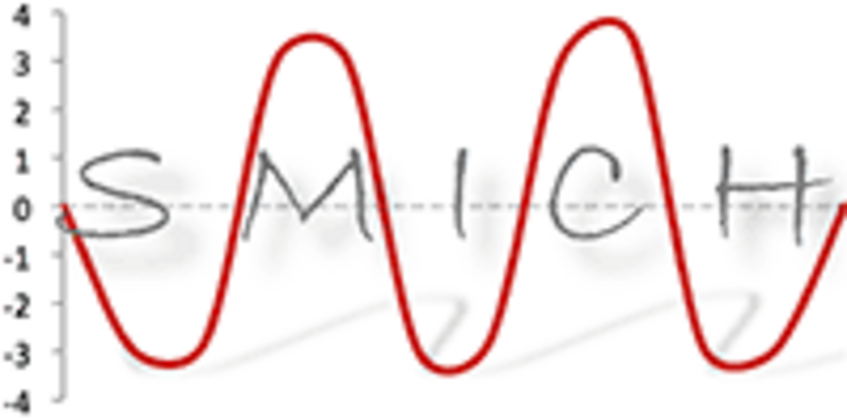CIBIV - Center for Integrative Bioinformatics Vienna
Arndt von Haeseler
Group Leader
arndt.von.haeseler@univie.ac.at
Phone: +43-1-4277-74307
Campus Vienna Biocenter 5, 1030 Vienna | Room: 1.107


Research
Our research interest is the integration of different areas of expertise to answer important biological questions. A special focus lies on the reconstruction of evolutionary history, especially, the development of phylogenetic methods and complex models and their application to large and complex datasets.
The CIBIV wants to understand the processes that have shaped the genomes of contemporary species. To this end we apply methods from statistics, computer sciences, mathematics and computational statistics to develop models that mimic the process of evolution. These methods are further investigated in close collaboration with "wet" biologists to address real biological questions.
Currently we are working (in collaboration with various colleagues) on the following aspects of molecular evolution:
Alignments
Statistics of sequence alignment (i.e. mcmcalgn). Recently we have extended this approach to reconstruct an alignment and a phylogenetic tree simultaneously.
Sequence evolution
To understand sequence evolution it is necessary to model the substitution process. We are working on models sequence that allow dependencies among sequence sites (Markov fields seem to be an appropriate tool). We are developing test statistics to select the "best" model, to detect groups of sequence that evolve differently form the rest of a gene family, say. We have developed a test to detect change points (branches where the substitution model changes) in a phylogenetic tree. Currently we are working on methods to detect the dependency structure among sequence positions in an alignment.
Gene trees
We develop efficient heuristic algorithms to reconstruct trees based on sequence data (i.e. TREE-PUZZLE). To this end we have developed parallel TREE-PUZZLE program. Moreover, we are currently developing a variant of TREE-PUZZLE, which computes (maximum) likelihood trees for up to 1,000 sequences in reasonable time. We are also working on super tree methods to merge different gene trees to form one species tree. Quartet based tree reconstruction method appear as a versatile tool to study super trees from a new perspective.
Population genetics
Gene trees appear in a natural context also in populations, here, however, the gene tree in a population is a random variable if a sample of sequences is drawn from the population. We are interested in the development and application of coalescence based methods to infer the demographic history of populations. In the future we plan to work on coalescence processes with complex interactions patterns. In this context we have constructed the so called hvrbase, where currently most of the hypervariable regions from the mitochondrial genome from primates are collected in a multiple sequence alignment. This user friendly database is currently extended to store other genomic regions.
Complex pattern of evolution
To reconstruct the evolutionary history it is necessary to take more complex events like lateral gene transfer (between species), gene duplication, and gene loss into account. A combination of these events may disturb the relation between species trees and gene trees. Recently, we have developed a maximum likelihood based method to estimate the amount of gene flow among prokaryotes by analyzing the COG database. This full genome analysis poses a collection of new computational problems as well as modeling problems. Our "Jukes Cantor" type of modeling gene transfer needs refinements. Moreover, we have to take into account duplication and losses of genes. This will be done in the next future.
Species tree
The topics outlined above will eventually be employed to reconstruct one gigantic species tree utilizing all the sequence data available for the different species. Models of sequence evolution are necessary to detect differently evolving regions in complete genomes. Tree reconstruction methods for a large number of sequences allow the reconstruction of gene trees with several hundred sequences, and finally the patchiness of the available sequence data for different species makes it necessary to apply super tree methods. A better understanding of complex evolutionary patterns will also reveal instances where the gene trees are different from the species tree. Once this is well understood it seems reasonable to construct a sequenced based tree of life.
Austrian EMBnet node
The European Molecular Biology Network (EMBnet) was constituted in 1988 with the purpose of creating an infrastructure for molecular biology-based bioinformatics in Europe. Analogous EMBnet Austria is a national facility to support computer aided research in biosciences.
Since 1993 Austrian EMBnet Node provides access to regularly updated sequence databases and associated data, as well as several software packages to search these databanks and to perform sequence and data analysis.
EMBnet as reliable backbone in European Bioinformatics infrastructure offers a panel of experts available to give specialised courses at its nodes. By maintaining and offering the EMBnet resources and expertise to the academic community more than 200 Austrian scientific projects were supported.
Within the scope of teaching activities of the universities over 2000 students were taught in Bioinformatics using the EMBnet Resources.
Publications
Fischer, Mareike (2012). Non-hereditary Maximum Parsimony trees. J Math Biol;65(2):293-308. PMID: 21842167
Thi Nguyen, Minh Anh; Gesell, Tanja; von Haeseler, Arndt (2012). ImOSM: Intermittent Evolution and Robustness of Phylogenetic Methods. MOL BIOL EVOL;2(29):663-673. PMID: 21940641
Kalyna, Maria; Simpson, Craig G; Syed, Naeem H; Lewandowska, Dominika; Marquez, Yamile; Kusenda, Branislav; Marshall, Jacqueline; Fuller, John; Cardle, Linda; McNicol, Jim; Dihn, Huy Q; Barta, Andrea; Brown, John W S (2012). Alternative splicing and nonsense-mediated decay modulate expression of important regulatory genes in Arabidopsis. NUCLEIC ACIDS RES;40(6):2454-69. PMID: 22127866
more publications of the group von Haeseler
Collaborations & Funding

Doctoral Program "RNA Biology"
The von Haeseler group participates in the special Doctoral Program "RNA Biology" reviewed and funded by the Austrian Research Fund FWF.

SFB RNA-Reg RNA regulation of the transcriptome
The Group Von Haeseler participates in the Special Research Area (SFB) "RNA-Reg - RNA regulation of the transcriptome" funded by the Austrian Science Fund FWF. SFB's are peer-reviewed, highly interactive research networks, established to foster long-term, interdisciplinary co-operation of local research groups working on the frontiers of their thematic areas.

FWF project "Parallel computing for phylogenetic inference"
The FWF project "Parallel computing for phylogenetic interference" funds an international collaborative effort to optimize and improve bioinformatic analysis methods for molecular data. The final aim of the project is to implement those new methods and models to be scalable on all modern multi-core, accelerator and supercomputer architectures.

Doctoral Program "Signaling Mechanisms in Cellular Homeostasis"
The Group von Haeseler is an associated member of the special Doctoral Program "Signaling Mechanisms in Cellular Homeostasis" reviewed and funded by the Austrian Research Fund FWF.
